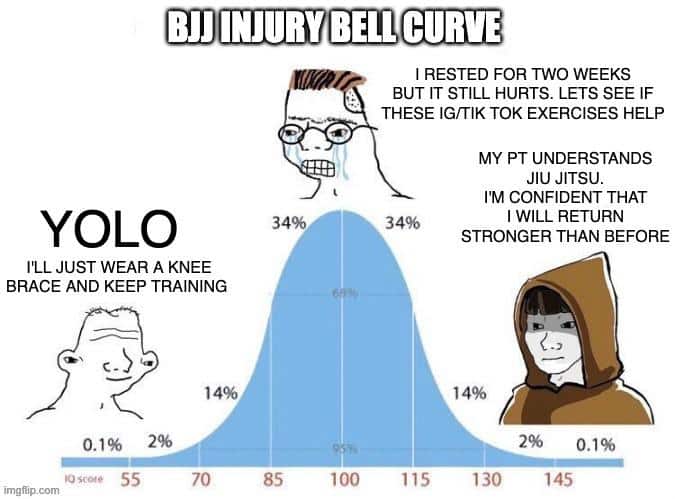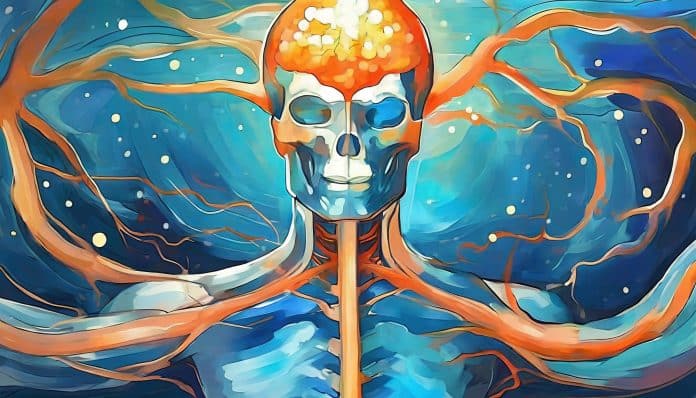Understanding Inflammation: What It Means for the Aging BJJ Athlete
In the life of a BJJ athlete over 40, inflammation becomes a growing theme. To successfully navigate this new landscape, it’s vital to stratify the different types of inflammation and understand their functions. Broadly, there are two types: acute inflammation, the body’s immediate response to trauma or injury, which typically subsides in a few days, and chronic inflammation, a longer-lasting inflammation that can persist for months, even years. As a martial artist achieving mastery over your game and body, discerning between these types and understanding their implications becomes integral to your journey to optimal recovery and maintenance.
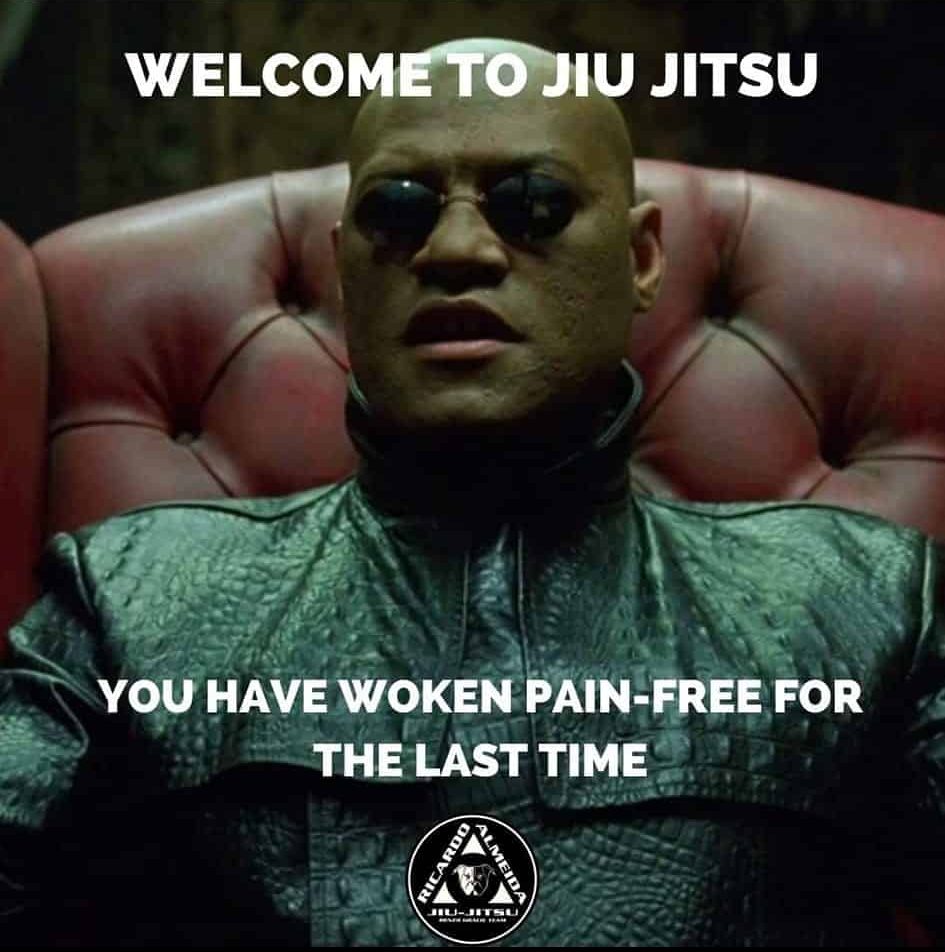
The Dual Faces of Inflammation: Friend and Foe
When we engage in intense physical activity, like practising Brazilian Jiu Jitsu, it’s to be expected that our muscles will feel the strain. This often results in inflammation, a natural response by our bodies. Contrary to popular belief, not all inflammation is harmful. Some inflammation is a natural part of muscle adaptation and vital for developing strength and endurance.
This process occurs when the immune system sends increased blood flow and white blood cells to the muscle tissues damaged during workouts. This inflammatory response aims to repair the damaged tissues and induce an adaptive response that produces more robust and resilient muscles for future needs.
However, seeing inflammation as solely beneficial might lead to a detrimental outlook. ‘No pain, no gain’, a famous mantra, can be misleading. Yes, acute inflammation is an essential component of training adaptation. However, overdoing it and ignoring signals of too much stress can convert acute inflammation to its chronic counterpart, which is a different matter entirely.
However, more often than not, the term inflammation conjures images of seething aches and unending discomfort—a reality for many grappling with chronic inflammation. This continuous, low-level inflammation can harm your health, leading to a higher risk of various ailments such as heart disease and arthritis. This inflammation can become a potent adversary in your BJJ journey, posing challenges, especially as your body ages past 40.
Identifying and Addressing Symptoms of Chronic Inflammation
It is critical to identify subtle signs of chronic inflammation, as they often appear disguised as harmless discomfort. These warning signs include, but are not limited to, persistent fatigue, loss of appetite, low-grade fever, and unexplained weight loss.
Don’t disregard these symptoms as mere inconveniences or side effects of aging. Instead, view them as your body gently nudging you towards a course correction. This might mean readjusting your training strategy, introducing dietary changes, enhancing recovery habits, or seeking guidance from a professional health advisor.
Charting Your Course: From Acknowledging to Managing Inflammation
As your age marches north of 40, inflammation becomes more salient. While the bane of chronic inflammation is undeniable, remember, this isn’t an insurmountable obstacle. With careful understanding, proactive management, and strategic adjustments to your training and recovery routines, inflammation can transform from an adversary to a compass—guiding you towards healthier, more sustainable practices that allow you to enjoy the art of Brazilian Jiu Jitsu for many more exhilarating years.
Selecting an Anti-Inflammatory Diet: Food Choices for the Brazilian Jiu Jitsu Athlete
Your diet is pivotal in controlling inflammation and facilitating recovery for your demanding Brazilian Jiu Jitsu sessions. A diet rich in antioxidants, lean proteins, complex carbohydrates, healthy fats, and plenty of fresh produce can significantly augment your body’s ability to stave off injury, recover quickly post-training, and keep inflammation at bay.
Let’s delve deeper into these critical nutritional aspects that a dedicated BJJ athlete must integrate into their diet:

Antioxidants: Power-Packed Defenders
Antioxidants, found in abundance in brightly coloured fruits and vegetables, combat oxidative stress in the body. This oxidative stress can otherwise accelerate aging and trigger inflammation. Some antioxidant-rich foods to include in your diet are:
- Spinach
- Grapes
- Blueberries
- Tomatoes
- Broccoli
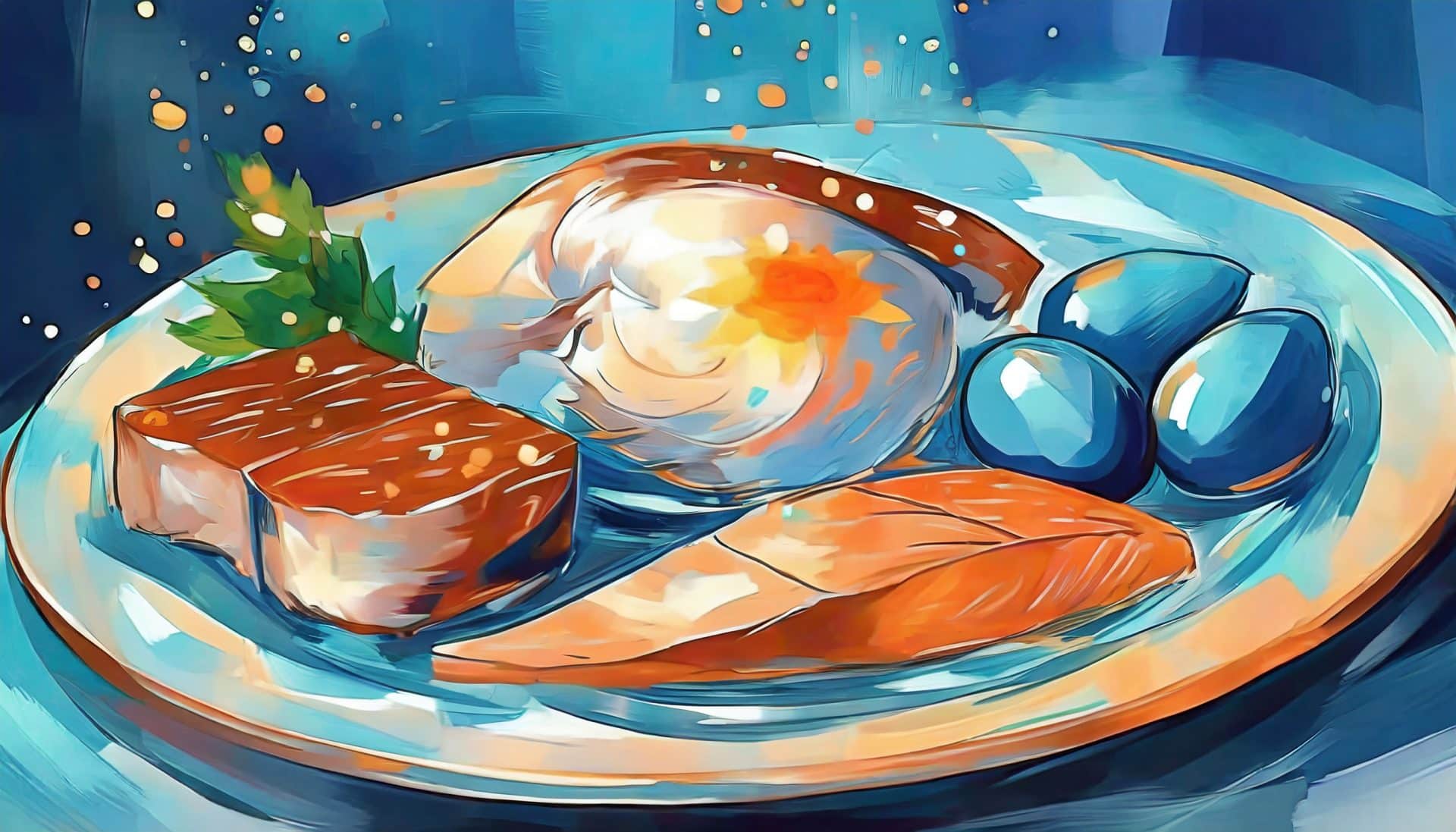
Proteins: Building Blocks of Muscle
Muscle repair is one of the critical aspects of recovery, and proteins play a vital role in it. Lean proteins work wonders for muscle recovery and simultaneously keep inflammation in check. Here are some excellent sources to consider:
- Chicken breast
- Lean cuts of beef
- Fish like salmon and tuna
- Eggs
- Quinoa
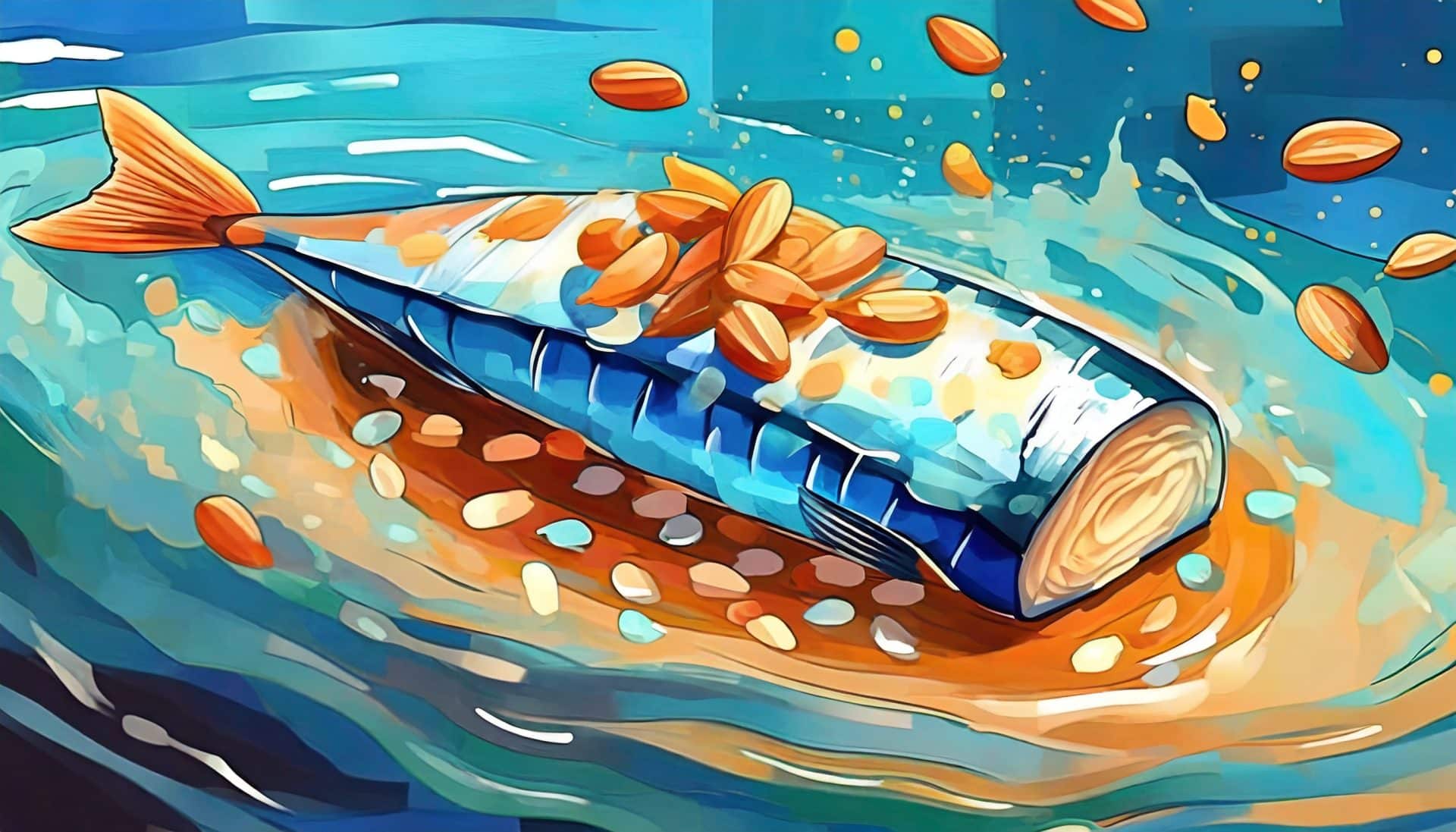
Healthy Fats: The Unsung Heroes
Fats, particularly Omega-3 fatty acids, play a crucial role in managing inflammation levels in the body. They’re excellent for brain health and fighting inflammation. Here are some Omega-3-rich foods to include in your diet:
- Mackerel
- Walnuts
- Chia seeds
- Flaxseeds
- Avocados
The proper diet is just as important as mastering the right techniques on the mat. Incorporating these foods into your diet can make a tangible difference to your recovery times and overall performance as a BJJ athlete, notably as you age past 40.
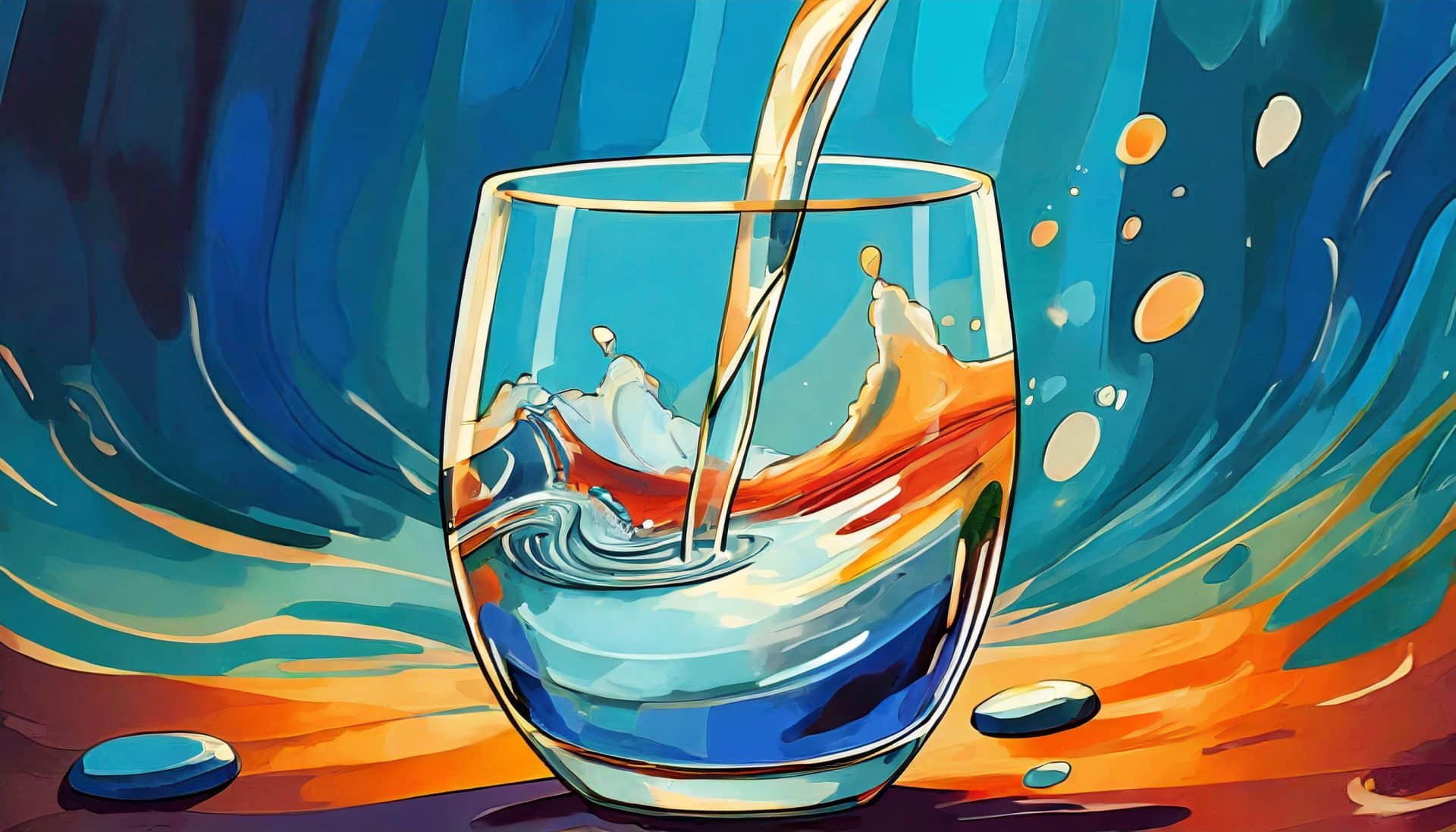
Hydration and Inflammation: The Importance of Water in Recovery
The significance of water to the body cannot be underestimated, especially in the context of a Brazilian Jiu Jitsu (BJJ) athlete enduring physically demanding training sessions. As you age past 40, understanding the correlation between hydration, inflammation, and recovery becomes vital. Water is essential for maintaining all cells’ health, removing waste products from metabolism, regulating our body temperature, and helping with nutrient distribution.
Hydration, Recovery and Inflammation: Establishing the Connections
When dealing with inflammation and recovery, it’s pertinent to understand, on a cellular level, how hydration is intertwined with these processes. Without optimal hydration, our bodies struggle to transport vital nutrients, eventually impeding recovery. Furthermore, being dehydrated can trigger inflammation as the body is in a constant state of needing to restore balance. “Hydration is the key catalyst to optimise recovery and down-regulate inflammation. The body needs water to circulate nutrients, and when we’re dehydrated, we are inhibiting that crucial process.”
The Guideline to Hydration
While hydration is vital, it begs the question – how much is enough? There’s no definitive answer because it varies from person to person, considering factors such as physical activity, the environment and personal health. However, a general guideline suggests that men should aim for about 3.7 litres (or about 13 cups) and women about 2.7 litres (or about 9 cups) daily.
Hydration Strategies for the BJJ Athlete
- Consistent Hydration: Staying hydrated does not mean gulping large amounts of water before or after a training session. It’s about staying consistent, which requires water consumption throughout the day.
- Pre-Hydration: Begin the hydration process well before you start your BJJ training. This would ensure optimal hydration levels during the session, leading to better performance and recovery.
- Replenishment: Post-training hydration is equally important to replenish the fluids lost during the session. Including a source of electrolytes like a sports drink or coconut water can fasten the hydration process due to the speedy absorption rate.
Irrespective of age, the role of hydration in reducing inflammation and improving recovery can’t be overstated. As a BJJ practitioner, acknowledging hydration as an essential component of your training regime can remarkably enhance your performance and recovery. Remember, there is always time to start incorporating a consistent hydration routine into your daily pattern!
The Galpin Equation
Dr Andy Galpin, a revered sports scientist, conjured this equation, envisioning a more insightful, personalised hydration protocol. This calculation factors the individual’s exercise intensity and duration to offset the water losses expended during BJJ training.
So, how does the Galpin Equation prove beneficial? Let’s expound on some of the key ways it can enhance your BJJ journey-
- Optimises Hydration: Staying well-hydrated can enhance physical performance during intense BJJ bouts. A well-hydrated body ensures the cardiovascular system can efficiently pump blood, supplying nutrients and oxygen to the working muscles.
- Reduces Fatigue: By preventing dehydration, the Galpin Equation mitigates the early onset of fatigue, enabling athletes to maintain energy levels during lengthy sessions.
- Aids Recovery: Better hydration levels expedite muscle recovery post-training by effectively transporting the waste products away from the muscles.
To weave the Galpin Equation into your BJJ training, follow the below steps:
Every 15 minutes, consume (in ounces) your body weight (in pounds) / 30 to stay hydrated during a demanding activity.
Remember, individual variability comes into play, which means there’s no one-size-fits-all formula for hydration. Listen to your body’s signals. You might be under-hydrated if you’re experiencing symptoms such as dry mouth, fatigue, or dark urine. On the contrary, frequent, clear, and copious urination could indicate overhydration. When in doubt, a quick chat with a healthcare professional can help adjust the equation parameters to meet your unique physiological needs.
This is also assuming you are going INTO training adequately hydrated.
Considerations and Precautions
The Galpin Equation can undoubtedly provide a reliable baseline, yet it’s critical not to rely upon it solely. Jiu Jitsu athletes must supplement fluid intake with a balanced diet and adequate electrolyte consumption. Keeping up with a regularly revised and personalised hydration plan is paramount. Finally, while the equation is a practical guideline, never dismiss your body’s feedback instead of a mathematical calculation.
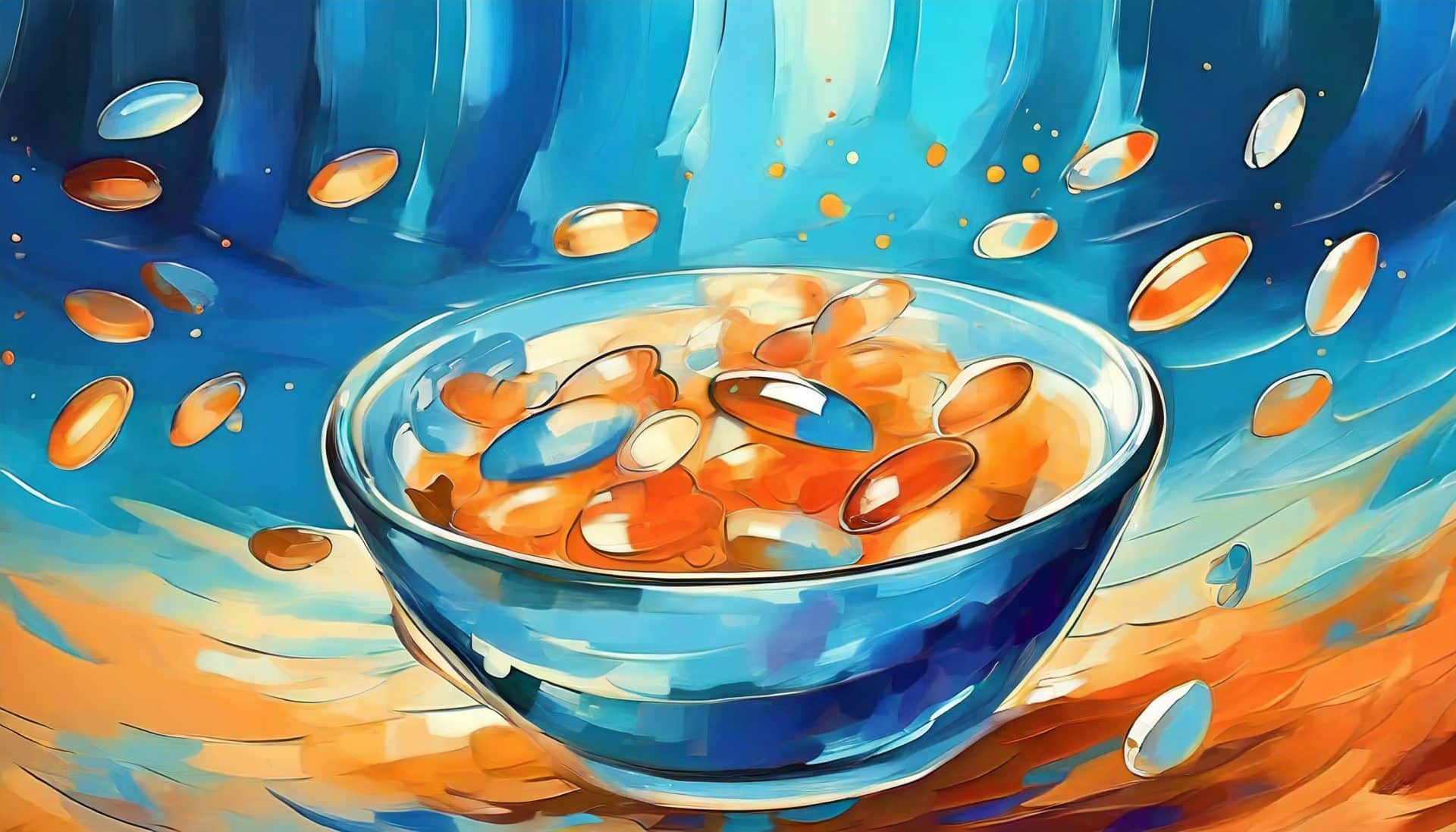
Supplements to Aid Recovery and Reduce Inflammation: What Works?
As much as a well-balanced diet is vital in reducing inflammation and aiding recovery, sometimes a little extra helping hand is good. Supplements may fill this gap, offering extended aid to bolster your recovery after those gruelling BJJ training sessions. Remember, they’re not a substitute for nutritious food and ample rest. Their function is supplemental, supporting your underlying health regime.
Omega 3 Fatty Acids: The Versatile All-Rounder
Omega 3 fatty acids have been shown to possess anti-inflammatory properties, and the good thing is they aren’t just about fighting inflammation. Omega 3 fatty acids aid in maintaining your heart’s health, reducing depression, and promoting brain health. An integral part of your supplement stack, they’re most commonly found in fish oil, but vegan-friendly versions are available, too.
Protein Supplements: Haste the Recovery
Muscle recovery stands vital in the life of a BJJ athlete. Protein plays an imperative role in muscle repair and growth. When balanced with carbohydrate intake, a protein supplement such as whey, casein or a plant-based protein can speed up muscle recovery after a strenuous training session. Consider taking this after training to maximise its effect.
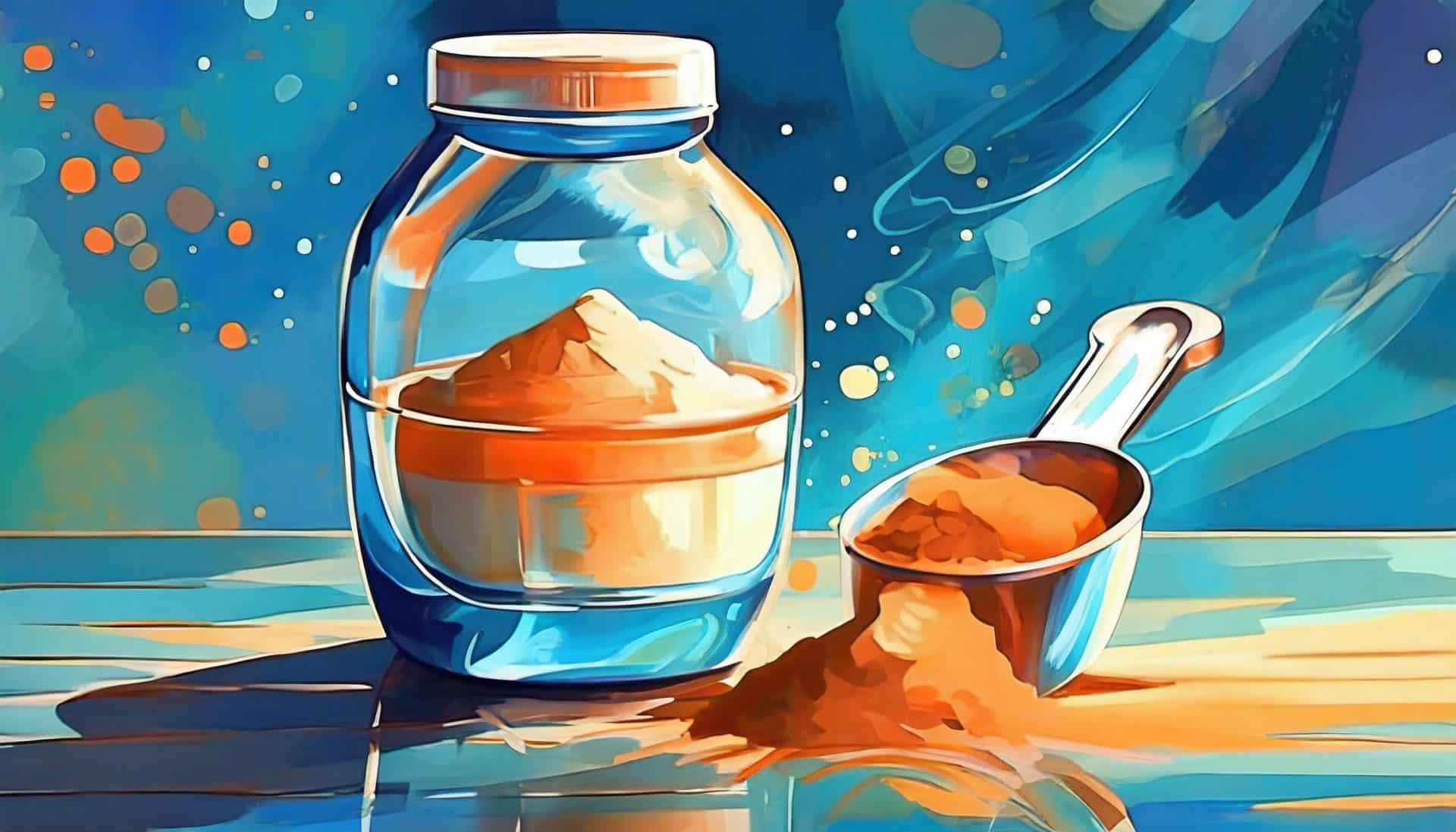
Creatine: The Power Supplier
Creatine, an essential enzyme in your body, fuels your muscles during intense workouts. Supplementing with creatine boosts your natural reserves, allowing you to work out harder and recover faster. Studies show creatine supplementation reduces inflammation and muscle damage in athletes, particularly following intense exercise.
The Role of Vitamins
Though small in quantity, vitamins have significant implications for our body functions. Two stark players in inflammation and recovery are Vitamin C and Vitamin D. Vitamin C is a potent antioxidant that aids tissue repair and immune function. On the other hand, vitamin D, widely recognised for its bone health benefits (I promise it’s not just about the bones), helps regulate the immune system and quell inflammation.
Curcumin: Bring the Spice On
Curcumin, a potent anti-inflammatory compound found in the common spice turmeric, has been shown to match the effectiveness of some anti-inflammatory drugs. Impressive, eh? Apart from fighting inflammation, it’s also high in antioxidants, making it a great addition to your post-workout recovery routine.
In conclusion, supplements can effectively accompany your diet, helping speed recovery and control inflammation. However, their use should be tailored to individual needs and guided by a healthcare professional to ensure safety and efficacy. Time to give your training that desired boost!

Sleep and Recovery: The Underrated Weapon in the BJJ Athlete’s Arsenal
Sleep, as unremarkable as it may seem, is our body’s way of resetting and refreshing itself. Whether you’re a youthful Brazilian Jiu Jitsu (BJJ) practitioner or a seasoned athlete navigating the journey of “life after 40”, the importance of quality sleep cannot be overstated. Here, we will delve deeper into understanding the dynamics between sleep, recovery, and, over time, reducing inflammation.
The Intricate Dynamics of Sleep and Recovery
While asleep, your body initiates various physiological processes for repair and restoration tasks. The common perception might be that when one sleeps, all the body systems, including the muscular, just ‘shut down’. On the contrary, many crucial functions take place that support recovery and combat inflammation. Deep sleep plays a vital role, during which the pituitary gland releases growth hormone responsible for tissue growth and regeneration.
Sleep Quality Versus Quantity
In the realm of sleep, it is not simply a matter of racking up several hours in bed. Quality equals if not outweighs quantity. Practitioners should aim for deep, uninterrupted sleep that allows your body to run the entire cycle of REM and non-REM sleep phases multiple times a night. This optimises the body’s repair work, boosting recovery post-training sessions and reducing inflammation.
Implementing a Sleep-Positive Routine
Given sleep’s critical role in combating inflammation and facilitating recovery, it’s worth developing a sleep-positive routine tailored to your needs. Here are some strategies:
- Create a sleep-conducive environment: Ensure the room is dark, quiet, and calm. Use blackout curtains and earplugs if necessary.
- Establish a consistent sleep schedule: By aiming to go to bed and wake up at the same time every day, we condition our body’s internal clock to have more natural and refreshing sleep periods.
- Limit intake of alcohol and caffeine: These substances can interfere with your sleep cycle, preventing you from achieving a deep and restful sleep.
- Engage in regular physical activity: Besides the apparent benefits of BJJ performance, regular exercise can also promote better sleep quality.
In conclusion, acknowledging and ceding to the recovery pace of our body plays an intrinsic role in the fight against inflammation, especially for athletes over 40. Remember, sleep is not for the weak; it’s for the wise.

Cold Plunges – suitable for recovery – not so ideal for adaption
Many BJJ practitioners vouch for the effectiveness of cold plunges, or cold water immersion, in aiding recovery post-training sessions, particularly in reducing inflammation. And, rightly so, there’s science backing the benefit. However, it’s also pivotal to understand the other facet of the coin – its impact on adaptations. Understanding a setting where cold plunges shine and where they might deter progress can help an athlete make informed decisions.
How Cold Plunges Aid Recovery For BJJ Athletes
The premise of cold plunges as a recovery tool rests on vasoconstriction, where exposure to cold water forces the blood vessels to narrow, decreasing blood flow to the muscles. This limits the inflammatory response, thereby reducing muscle soreness and accelerating recovery. Research has repeatedly shown that cold plunges can reduce delayed onset muscle soreness (DOMS) following intensive training.
Cold Plunges and Adaptation: A Complicated Relationship
While cold water immersion shines in prompt recovery, this may come at the expense of longer-term adaptation. How so? As counter-intuitive as it may sound, our bodies need a certain level of inflammatory response for the adaptation process. In simpler terms, inflammation is your body’s way of signalling it has been challenged and needs to adapt to get stronger. By curtailing the inflammatory response, cold plunges may impair muscle adaptation over time.
Making the Right Call: When to Plunge and When to Pause
The decision to go for a cold plunge should be based on your current training phase and goals. During intensified training or preparation for competition, cold plunges can help achieve consistent performance levels by aiding rapid recovery. On the other hand, during periods of foundational training where the goal is to build strength and conditioning, avoiding cold plunges might be beneficial.
In conclusion, like all tools at the disposal of the seasoned BJJ practitioner, the key to effectively utilising cold plunges lies in understanding its strengths and caveats. Listen to your body, understand your training goals, and remember that what aids recovery might not always be helpful for adaptation.
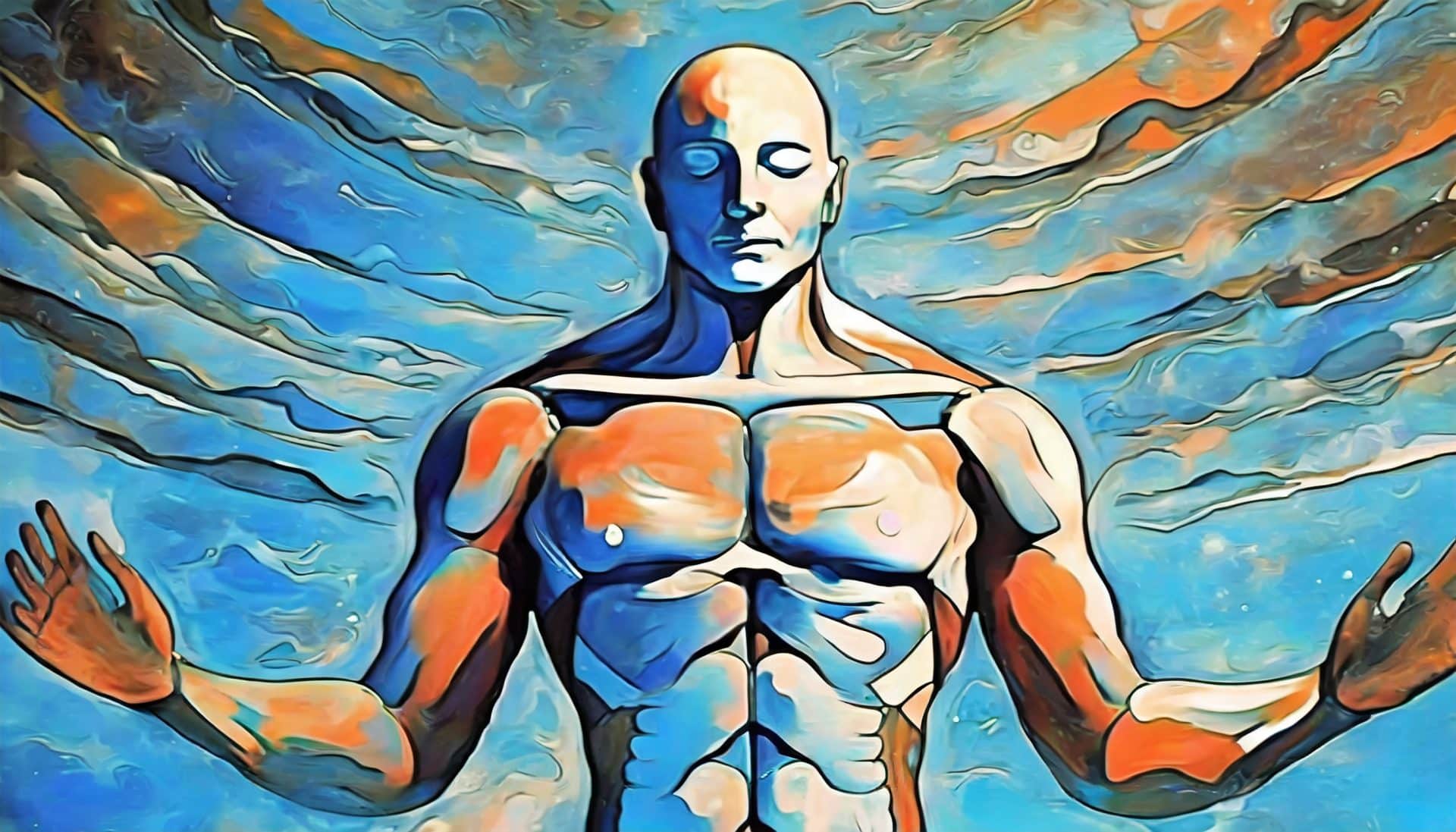
The Role of Massage and Physiotherapy in Reducing Inflammation and Aiding Recovery
As age graces us with wisdom, it also brings specific physiological changes. Amid arduous Brazilian Jiu Jitsu training, worn-out bodies yearn for downtime to replenish, fix the damage, and enlist recovery strategies. Incorporating restorative practices like massage and physiotherapy can dramatically enhance this recovery process, making it more efficient and effective.
Like most of us, I only tend to go to the Physio when there is something wrong enough that I feel I ‘have to’ – for me – I luckily have a physio just up the road from work – https://www.thebodyworkshop.co.nz/ – and – awesomely, my physio is also actively training in BJJ – so – I can turn up, tell him the technique we were working on in the last class. He already has a good idea of what I have done to myself this week. It’s beneficial to have a common language regarding the movements we are engaging in.
The Magic Touch: Massage for Recovery and Inflammation
Massages can produce remarkable muscle tension, flexibility, and stress reduction results when executed correctly. A massage can speed up the delivery of much-needed oxygen and nutrients to muscle tissues by stimulating blood circulation. This accelerates the healing process, reducing inflammation while flushing out toxins that may delay recovery.
Massages also have an immense calming impact on the nervous system, reducing stress hormones while stimulating the release of endorphins – the body’s natural mood enhancers. Remember, a balanced nervous system equals better recovery and less inflammation.
Finding Balance with Physiotherapy
Physiotherapy plays an equally compelling role in managing inflammation and aiding recovery. By assessing imbalances and weak areas, physiotherapists can devise a personalised training plan to strengthen your muscles, improve flexibility and optimise your physical health. They use a range of techniques, such as stretching, strengthening exercises and manual therapy, which are crucial for sustaining regular training over the age of 40.
Physiotherapy is unique in its dual approach to treating pain and other symptoms. On the one hand, it focuses on reducing inflammation and discomfort, whilst on the other, it addresses the root cause of the problem to prevent future injuries.
Making Massage and Physiotherapy Work For You
- Consistency is Key: Regular massages and physiotherapy sessions can help maintain your body in optimal condition. Consistency is vital in keeping the detrimental effects of inflammation at bay.
- Qualified Practitioners: Always ensure that you are working with a certified professional. They bring expertise to diagnose your problem areas and devise an appropriate treatment plan.
- Communicate: Speak freely about your pain and discomfort. Your feedback will enable the therapist to understand your physiology better and tune their treatment to suit your needs.
While it is easy to view massages and physiotherapy as luxurious treats or responses to injury, their proactive incorporation into your consistent training regimen can work wonders on longevity. They foster the critical balance between effort and ease that every Brazilian Jiu Jitsu athlete needs, particularly as they age past 40.

Understanding Your Body’s Signals: When to Push and When to Rest
Yup. We all pretend we are still 20 and go as hard as possible.
That was certainly the case when I started BJJ – I simultaneously decided to train three times a week, do weights three times a week in the morning, and pack some cardio sessions there. It worked for a while. Then, things started to creep up on me.
When I finally realised what was happening, the discomfort started to become more pronounced, and pain had become a constant companion. The fierce, unrelenting grip of inflammation had entwined itself into my ageing muscles, dousing my spirits and interfering with daily routines.
I needed to learn to read my body’s signals better. The mind can be stubborn in these matters, impenetrable to the body’s conversations. Yet, it’s utterly indispensable to understand these bodily whispers to keep a buoyant surfing board under us as we negotiate the waves of chronic inflammation.
Pain: Your Body’s Red Flag
Pain is the most primal signal your body can send. It’s a clear ‘stop’ sign. Your body is saying, ‘Enough is enough’. This isn’t the ‘good burn’ we feel after a heavy workout that sends us to sleep with a contented smile. When the pain is sharp, constant, or progressively worsening, it indicates that we need to step off the mats and allow some recovery time.
Fatigue – More than Just Tiredness
Fatigue can be a subtler companion, making its presence felt gradually. If we’re constantly tired, struggling to find energy for movements we’re acclimated to, it signals that our body needs additional rest. Not confusing fatigue with simple tiredness that vanishes after a good night’s sleep is essential. Fatigue, however, stays with you, changing the colour of your day entirely.
Increased Rate of Injury
Another signal, especially relevant for Brazilian Jiu Jitsu practitioners, is an increasing rate of injuries. If we find ourselves getting hurt more easily or finding old injuries flaring up, it might be the body’s way of telling us – a thorough repair shop visit is long overdue.
Listening, recognising, and interpreting these signals becomes pivotal as we age. Of course, everyone’s experience will vary — body literacy is a personal journey. Learning to read my body’s signals has meant the difference between continued, meaningful training and having to stop altogether. It will doubtless mean the same for you.
Remember, our journey into Brazilian Jiu Jitsu is a marathon, not a sprint. Being patient and understanding with our bodies allows us to continue this beautiful endeavour sustainably and progressively.

Creating a Long-term Training Plan: Sustainable Brazilian Jiu Jitsu Practice Over 40
As an older Brazilian Jiu Jitsu (BJJ) practitioner, wading through the potential minefield of injury and inflammation is crucial for maintaining longevity in the sport. This hurdle is best approached with a sound, personalised training plan that considers your recovery capacity, nutritional status, stress levels, and ambitions in BJJ.
Understanding Your Unique Circumstances
Before creating your training plan, it is vital to understand your unique circumstances truly. What are your areas of strength and weakness? How has age affected your athletic capacity, and how does this affect your training intensity and volume? Do you have any health conditions or injuries that must be considered?
Formulating Your Plan
Balance is your lodestar as you formulate your training plan. The intensity and frequency of your training must be balanced against your ability to recover. Particularly at first, err on the side of caution. Adding intensity and volume as you gauge your recovery capacity is far easier than recovering from an injury induced by overtraining.
The incorporation of consistent recovery strategies is essential. A healthy diet rich in antioxidants, protein, and healthy fats, accompanied by optimal hydration and sleep rhythms, will create the foundation for your training to flourish.
Adaptation plans need to be implemented. While cold plunges may aid in immediate recovery, they are not ideal for long-term adaptation. Alternative methods, such as massage and physiotherapy, provide both recovery and adaptation benefits.
Listening to Your Body: The Art of Autoregulation
Autoregulation – the practice of adjusting your training based on daily changes in performance – can be a powerful tool in your training arsenal. By paying attention to your body’s signals, you can avoid the follies of following a rigid programme when your body needs rest. As you age past 40, the willingness to listen to your body’s signals and adjust accordingly becomes exceptionally crucial.
In the end, the goal is continuous progression, not perfection. Understand that every journey has ups and downs, moments of triumph and setbacks. As a committed Brazilian Jiu Jitsu athlete, it’s about enjoying the ride while staying healthy and reducing inflammation.
